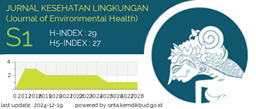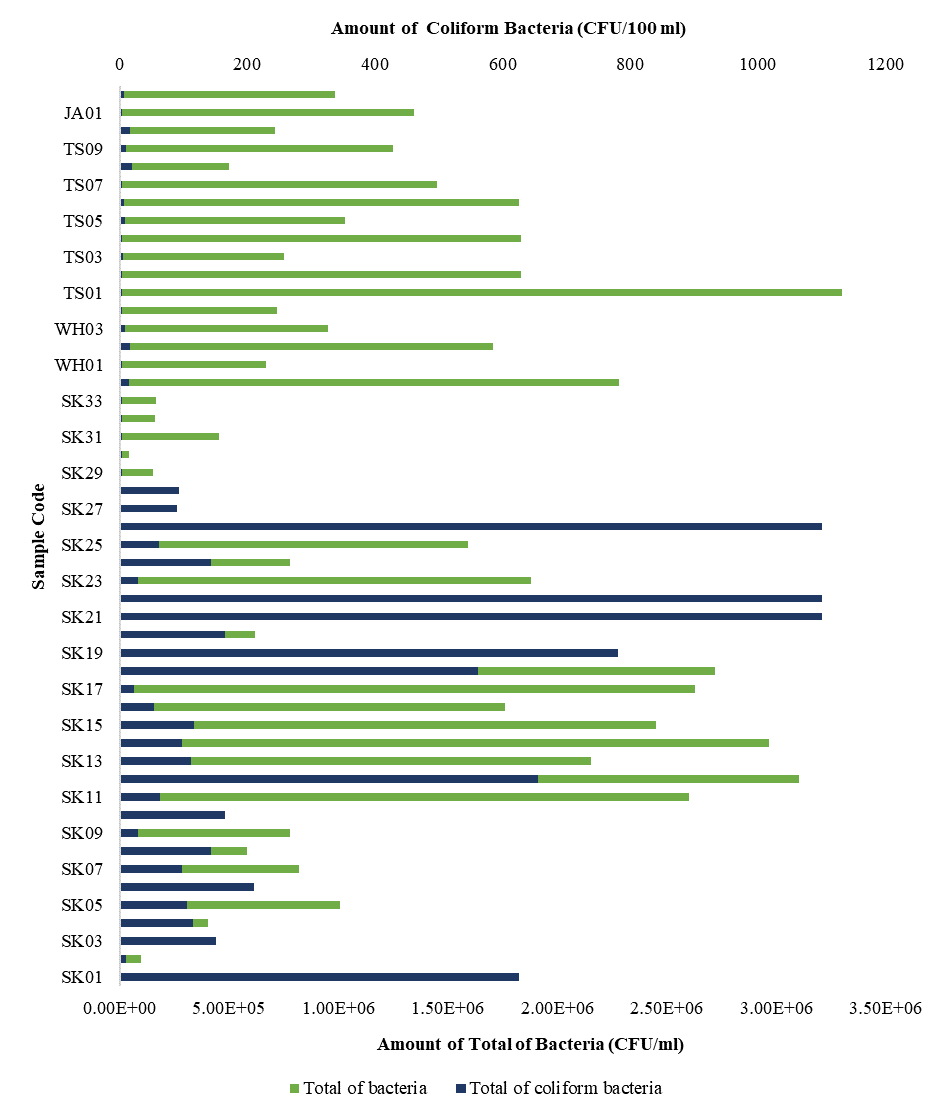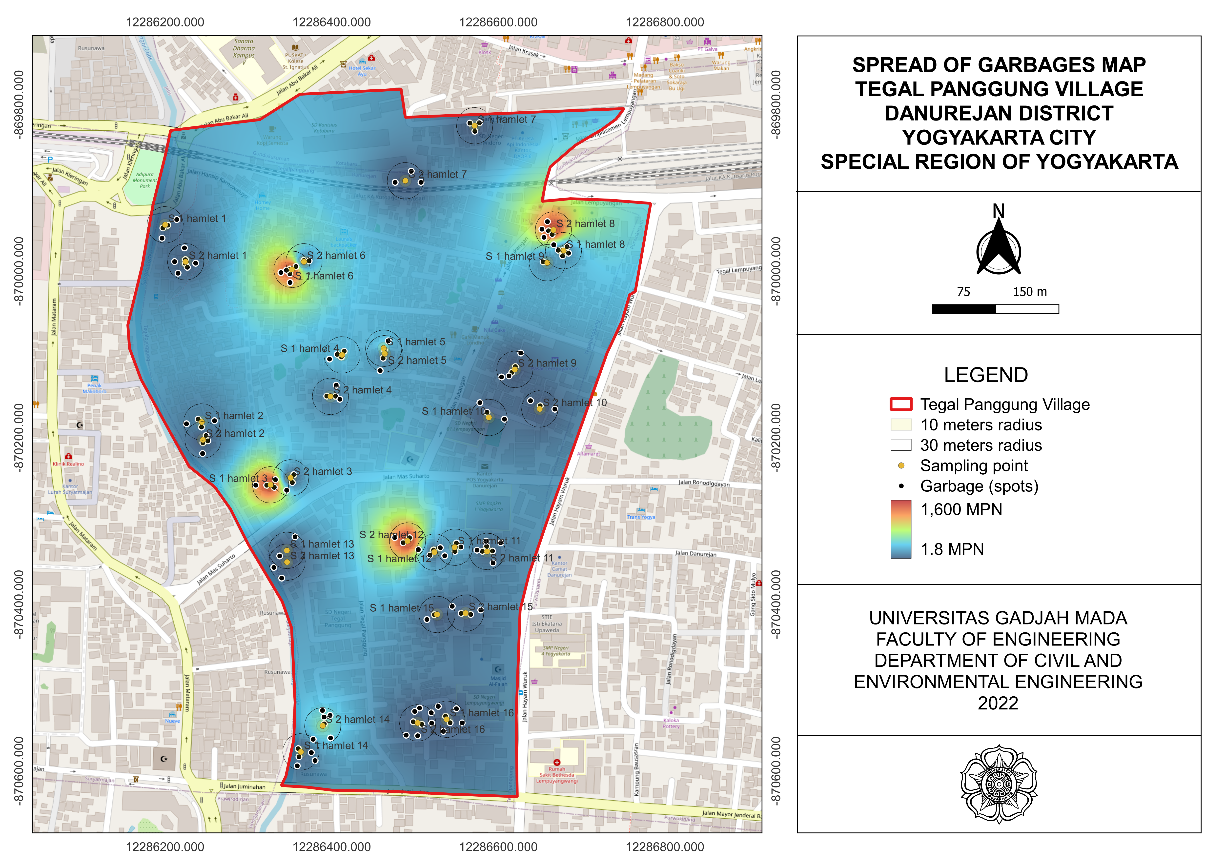Preventive Behavior Towards Maya Index at DHF Endemic Area
Downloads
World Health Organization. Monitoring and Managing Insecticide Resistance in Aedes Mosquito Populations. Geneva: World Health
Organization; 2016. http://www.who.int/mediacenter / factsheets / fs387 / en /
Ministry of Health of Republic Indonesia. Situasi Penyakit Demam Berdarah di Indonesia Tahun 2017. Jakarta: Center for Data and Information of Ministry of Health of Republic Indonesia; 2018.
World Health Organization. A Global Brief on Vector-Borne Diseases. Geneva: World Health Organization; 2014.
Tantawichien T. Dengue Fever and Dengue Hemorrhagic Fever in Adults. Southeast Asian J Trop Med Public Health. 2015;46(Suppl 1):79-
https://pubmed.ncbi.nlm.nih.gov/26506734/
Bhatia R, Ortega L, Dash AP, Mohammed AJ.Vectorborne Disease in
South-East Asia: Burdens and Key Challenges to be Addressed. WHO SouthEast Asia J Public Health. 2014;3(2):2-4. https://doi.org/10.4103/2224-3151.206878
Ministry of Health of Republic Indonesia. Dengue Hemorrhagic Fever Situation in Indonesia. Jakarta: Directorate General of Disease Prevention and Control of Ministry of Health of Republic Indonesia; 2014.
Ministry of Health of Republic Indonesia. Dengue Hemorrhagic Fever in Indonesia, 1968 - 2009. Buletin Jendela Epidemiologi. 2010;2(1):1–14. https://www.kemkes.go.id/download.php?file=download/
pusdatin/buletin/buletin-dbd.pdf
Pertiwi TS. Analisis Maya Index Pada Endemisitas DBD di Wilayah Kerja Puskesmas Putat Jaya Surabaya. Skripsi. Surabaya: Universitas Airlangga; 2019.
Sutaryo. Dengue. Yogyakarta: Medika; 2004.
Supartha I. Pengendalian Terpadu Vektor Virus Demam Berdarah Dengue, Aedes aegypti (Linn.) dan Aedes albopictus (Skuse) (Diptera:Culicidae). Denpasar: Universitas Udayana; 2008
Central for Disease Control and Prevention. Dengue Entomology and Ecology. USA: Central for Disease Control and Prevention; 2018. https://www.cdc.gov/dengue/entomologyecology/index.html
Sukesi TW. Monitoring Populasi Nyamuk Aedes Aegypti L. Vektor Penyakit Demam Berdarah Dengue di Kelurahan Gedongkiwo Kecamatan Mantrijeron Kota Yogyakarta. J Kesehat Masy. 2012;6(1):13–18. http://dx.doi.org/10.12928/kesmas.v6i1.1063
Notoadmodjo. Ilmu Perilaku Kesehatan. Jakarta: PT. Rineka Cipta; 2014.
Miller JE, Martínez-Balanzar A, Gazga-Salinas D. Where Aedes aegypti live in Guerrero; using the Maya index to measure breeding risk. In: Halstead SB, Gómez-Dantés H. editors. Dengue: A worldwide
problem, a common strategy. México: Ministry of Health, Mexico, and Rockefeller Foundation; 2002. p. 311-317
Waris L, Yuana WT. Pengetahuan dan Perilaku Masyarakat terhadap Demam Berdarah Dengue di Kecamatan Batulicin Kabupaten Tanah Bumbu Provinsi Kalimantan Selatan. Jurnal Buski. 2013; 4(1):144-149. http://dx.doi.org/10.22435/aspirator.v8i2.4159.69-76
Purnama SG, Baskoro T. Maya Index dan Kepadatan Larva Aedes Aegypti terhadap Infeksi Dengue. Makara Kesehatan. 2012;16(2):57-64. http://dx.doi.org/10.7454/msk.v16i2.1630
Endang PA, Heni P, Ginanjar A. Risiko Penularan Demam Berdarah Dengue berdasarkan Maya Indeks dan Indeks Entomologi di Kota Tangerang Selatan, Banten. Media Litbangkes. 2016:26(4);
-218. http://dx.doi.org/10.22435/mpk.v26i4.4510.211-218
Sofia S, Suhartono S, Wahyuningsih NE. Hubungan Kondisi Lingkungan Rumah dan Perilaku Keluarga dengan Kejadian Deman Berdarah Dengue di Kabupaten Aceh Besar, J Kesehatan Lingkungan
Indonesia. 2016;13(1):30-38. https://doi.org/10.14710/jkli.13.1.30%20-%2038
Rahmawati ND. Hubungan Kondisi Lingkungan Fisik, Biologi dan Praktik Pemberantasan Sarang Nyamuk dengan Kejadian Demam Berdarah Dengue di Wilayah Kerja Puskesmas Ngawi. J Kesehatan Masyarakat. 2016;4(3):845-850. https://ejournal3.undip.ac.id/index.php/jkm/article/view/13687
Purnajaya IK, Rusminingsih NK, Sujaya IN. Pengaruh Karakteristik Tempat Penampungan Air Bersih terhadap Kejadian Demam Berdarah
Dengue di Wilayah Kerja UPT Kesmas Gianyar I tahun 2012. Skripsi. Denpasar: Poltekes Denpasar; 2012.
Tampi FH, Runtuwene J, Pijoh VD. Survei Jentik Nyamuk Aedes spp di Desa Teep kecamatan Amurang Barat Kabupaten Minahasa Selatan.
Jurnal e-Biomedik (eBM). 2013:1(1); 260-264. https://doi.org/10.35790/ebm.1.1.2013.4356
Dewantara PW, Dinata A. Analisis Risiko Dengue Berbasis Maya Index pada Rumah Penderita DBD di Kota Banjar Tahun 2012. J Balaba. 2015;11(1):1-8. http://dx.doi.org/10.22435/balaba.v11i1.4148.1-8
Ramadhani MM, Astuty H. Kepadatan dan penyebaran Aedes aegypti setelah penyuluhan DBD di Kelurahan Paseban, Jakarta Pusat. J
Kedokteran Indonesia. 2013;1(1):10-14. http://dx.doi.org/10.23886/ejki.1.1591.10-14
Purnama SG, Baskoro T, Prabandari Y. Pengetahuan, Sikap dan Perilaku Pemberantasan Sarang Nyamuk Terhadap Infeksi Dengue di
Kecamatan Denpasar Selatan, Kota Denpasar, Bali. Arc. Com. Health. 2013;2(1):20-27. https://core.ac.uk/display/74003111
Rasjid A, Yudhastuti R, Notobroto HB. Relationship of Environmental Condition, Container and Behavior with the Exixtence of Aedes aegypti
Mosquito Larvae in an Endemic Area of dengue Hemorrhagic Fever, Makssar. Pakistan Journal of Nutrition . 2016; 15(3):295-298. https://dx.doi.org/10.3923/pjn.2016.295.298
Jaya DM, Ibrahim E, Anwar. Hubungan Pemberantasan Sarang Nyamuk (PSN) DBD dengan Keberadaan Larva Aedes aegypti di
Wilayah Endemis DBD Kelurahan Kassi-Kassi Kota Makassar. CORE. 2013;1(1):1-12. https://core.ac.uk/download/pdf/25491523.pdf
Notoatmodjo S. Pendidikan dan Perilaku Kesehatan. Jakarta: Rineka Cipta; 2003.
Notoatmodjo S. Promosi Kesehatan dan Ilmu Perilaku. Jakarta: Rineka Cipta; 2007
Widjaja J. Keberadaan Kontainer sebagai Faktor Risiko Penularan Demam Berdarah Dengue di Kota Palu Sulawesi Tengah. Aspirator. 2011;3(2):82-88. http://dx.doi.org/10.22435/aspirator.v3i2.2962
Nuryanti E. Perilaku Pemberantasan Sarang Nyamuk di Masyarakat. Jurnal Kesehatan Masyarakat. 2013;9(1):15-23. https://doi.org/10.15294/kemas.v9i1.2825
Elsa Z, Sumardi U, FaridahmL. Effect of Health Education on Community Participation to Eradicate Aedes aegypti-Breeding Sites in Buahbatu and Cinambo Districts, Bandung. National Public Health Journal. 2017;12(2):73-78. http://dx.doi.org/10.21109/kesmas.v0i0.1298
Priesley F, Reza M, Rusjdi SR. Hubungan Perilaku Pemberantasan Nyamuk dengan Menutup, Menguras dan Mendaur Ulang Plus (PSN 3M Plus) terhadan Kejadian Demam Berdarah Dengue (DBD) di Kelurahan Andalas. Jurnal Kesehatan Andalas. 2018:7(1);124-130. http://dx.doi.org/10.25077/jka.v7.i1.p124-130.2018
2. Formal legal provisions to access digital articles of electronic journal are subject to the provision of the Creative Commons Attribution-ShareAlike license (CC BY-NC-SA), which means that Jurnal Kesehatan Lingkungan is rightful to keep, transfer media/format, manage in the form of databases, maintain, and publish articles.
3. Published manuscripts both printed and electronic are open access for educational, research, and library purposes. Additionally, the editorial board is not responsible for any violations of copyright law.
JKESLING by UNAIR is licensed under a Creative Commons Attribution-ShareAlike 4.0 International License.







































